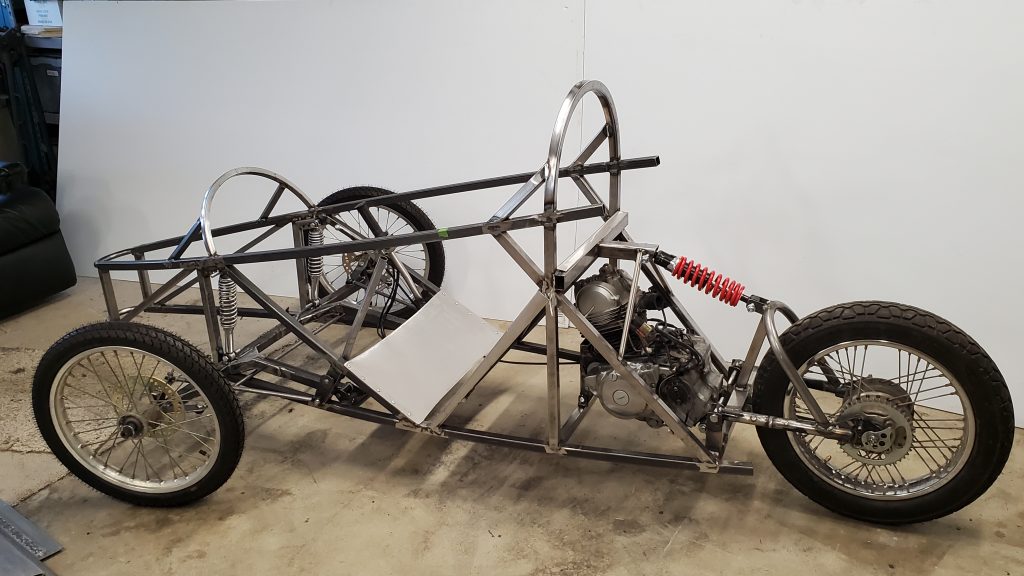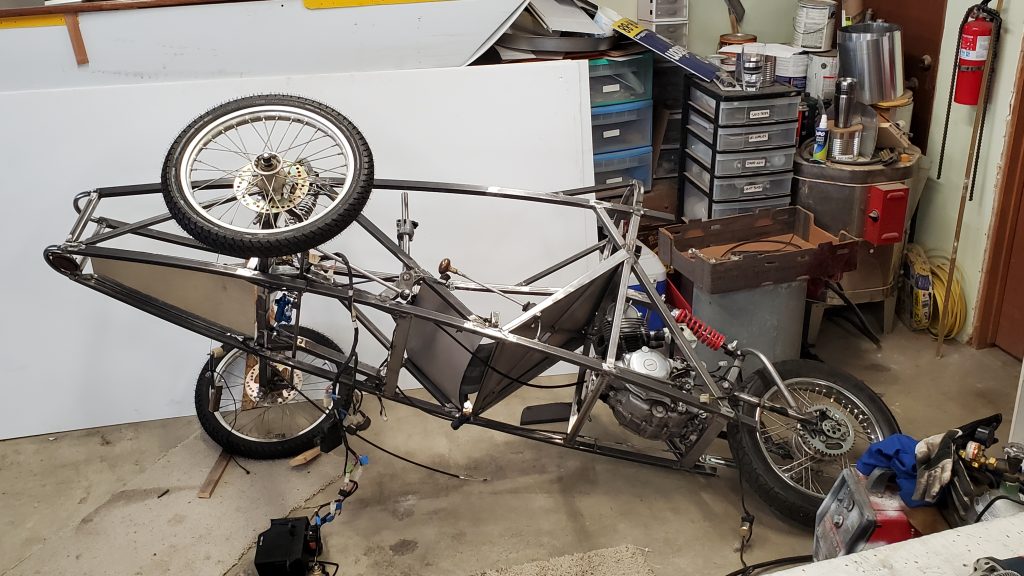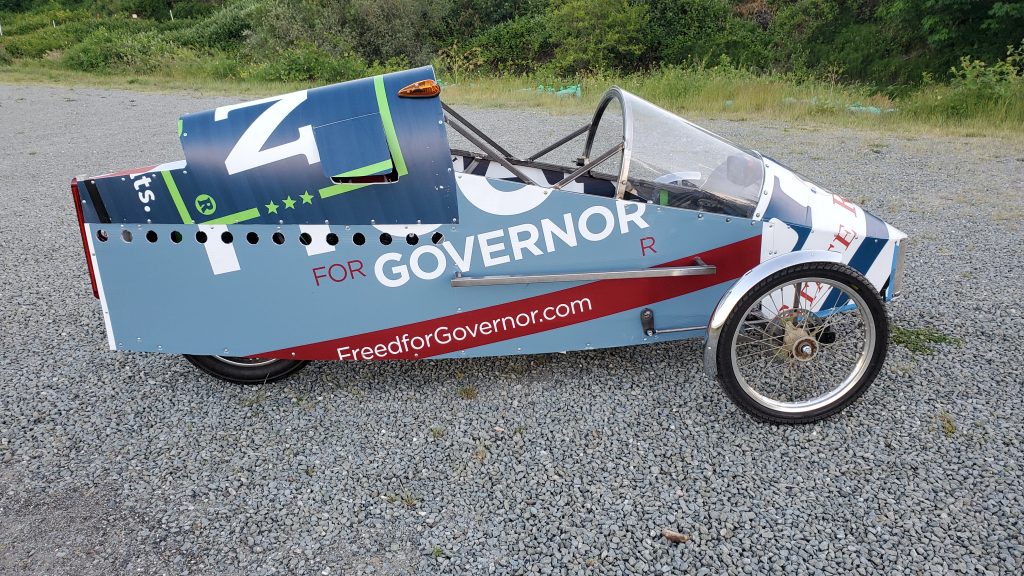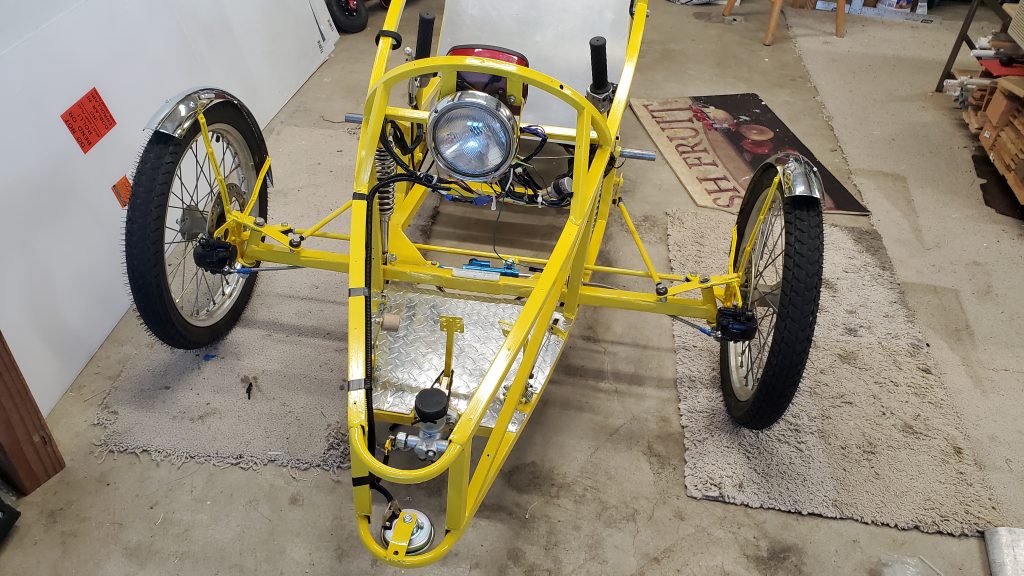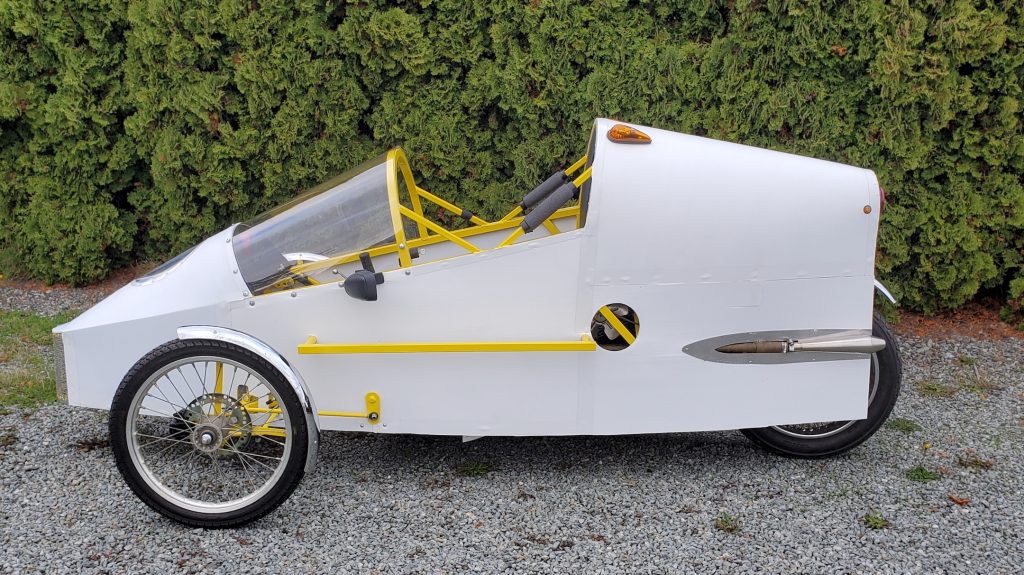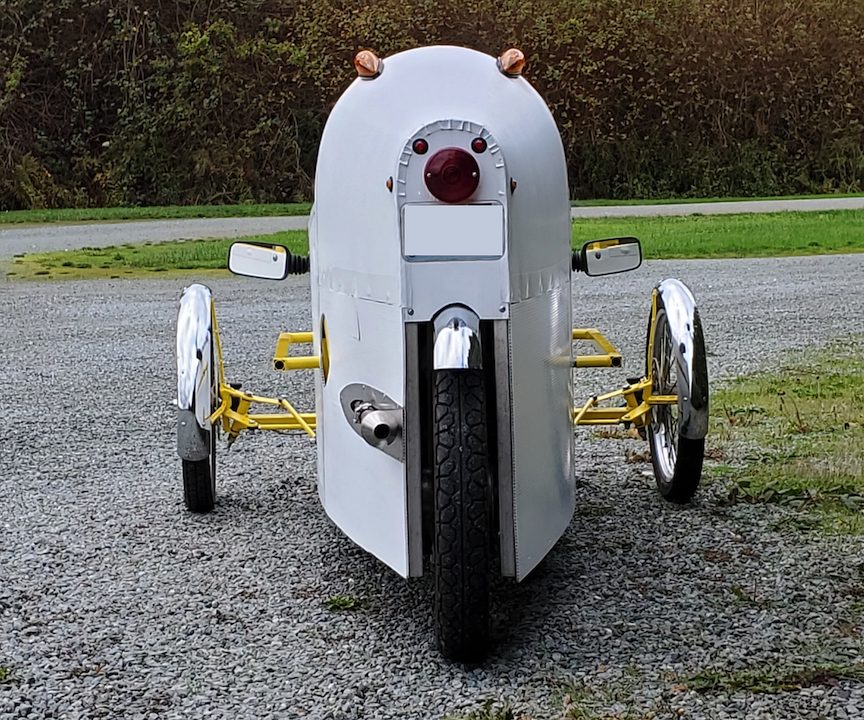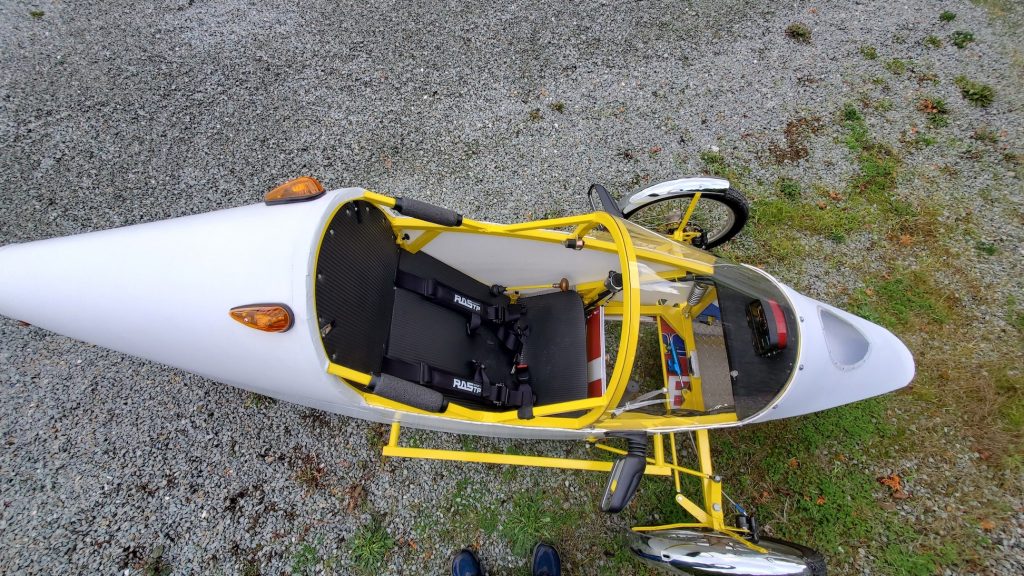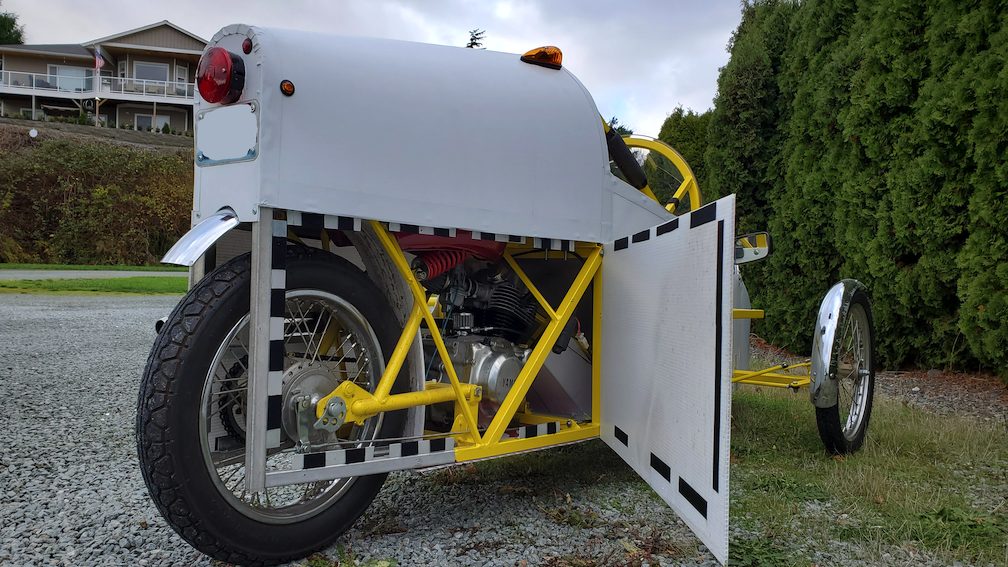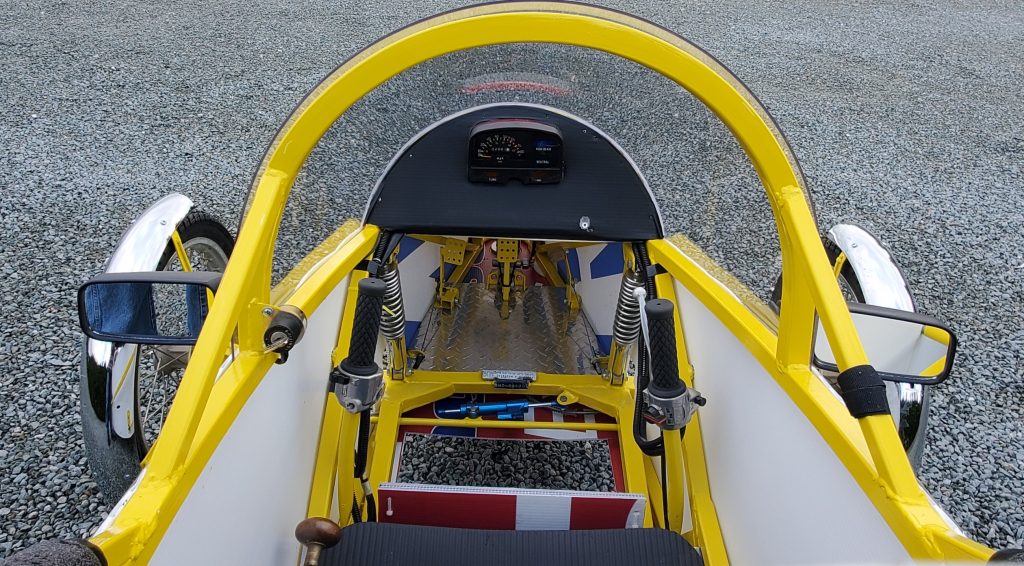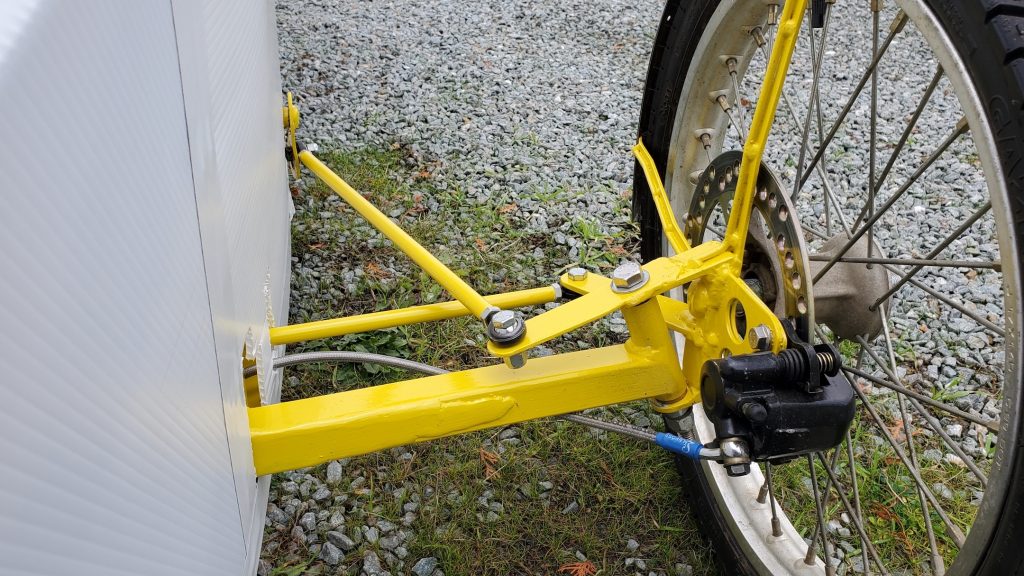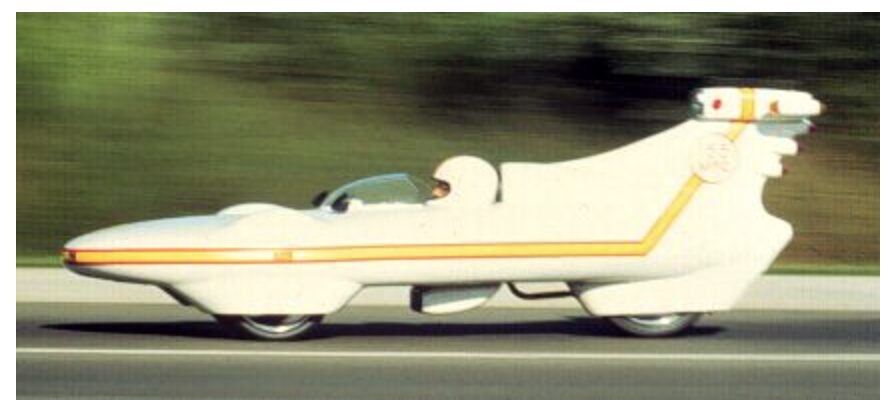
This is the California Commuter built by Dale Malewiki.
Back in 1982 it achieved 155 mpg breaking the old high mileage world record for a road use vehicle.
He used a Honda 90cc motor bored out to 110cc’s. The wheels were from a moped. This really inspired me.

This is Charly Perethian. Back in 1983 he won the Craig Vetter fuel challenge getting 372 mpg on his modified 1982 Yamaha 185 motorcycle.

This was the start of my 40 year old vision of a useful high mileage commuter. This also was my third attempt. I was lucky to find a barely used 1982 Yamaha 185, just like Charlies motorcycle.
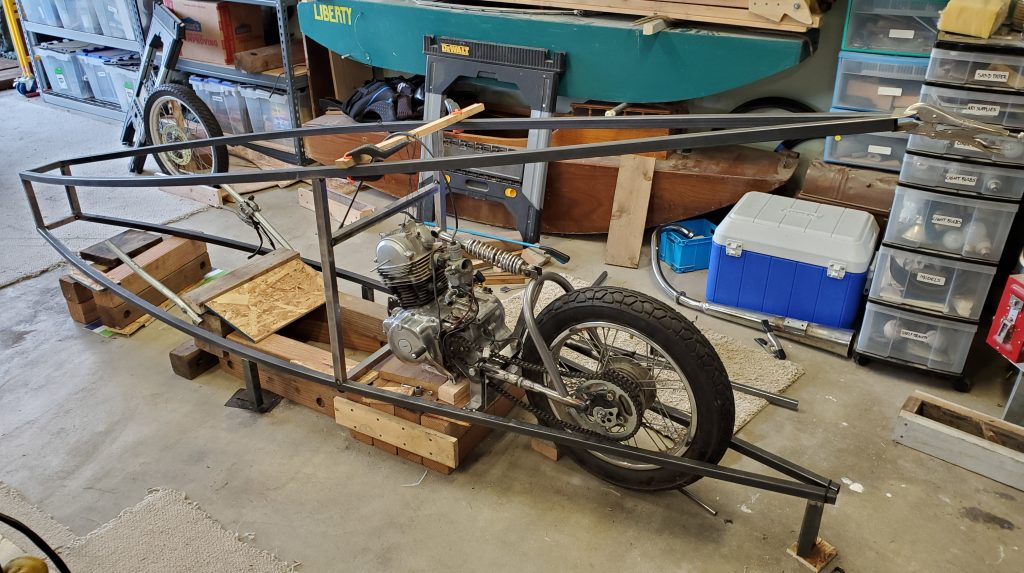
Here is an early frame design.
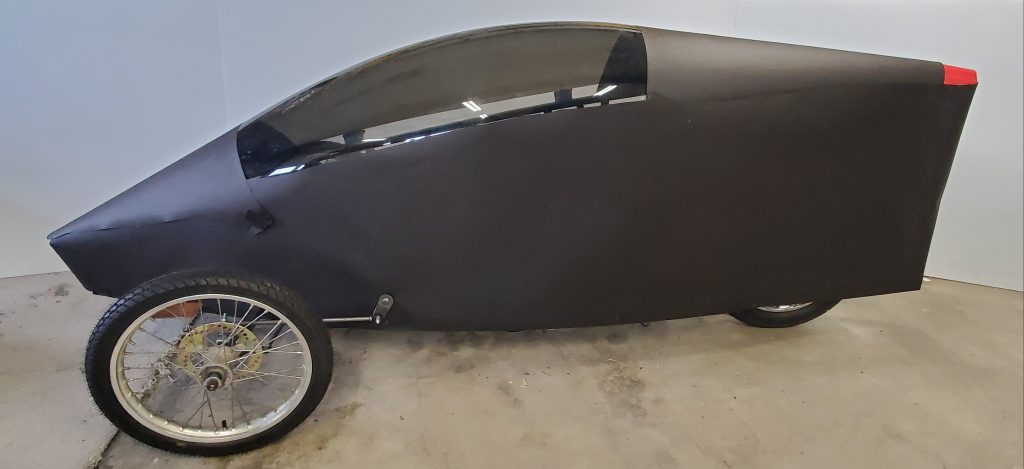
I created a tar-paper mock-up of the body. Later the framing was changed somewhat.
Borrowing ideas from Dale Malewicki’s California Commuter trike plans, I fashioned a basic rigid front swing arm. This helps stabilize the trike in corners
but also makes for a bumpy ride. To do it again I would use wishbone front suspension, move the front wheels forward to increase the current 72″ wheel base
and increase the length of the rear swing arm. Also relocate the swing arm pivot points more toward the motor sprocket.
Adding the electrical wiring.
I tried to use most all of the original motorcycle components, including the wiring harness and headlight. The rear shocks were moved up front.
After all the components were installed, I used campaign signs for a body mock-up.
After a few scary high speed runs with a strong crosswind, I decided to shorten the rear tail. I hand painted the frame and added new paneling.
Minimum steering linkage and inboard shocks help eliminate some air drag.
I added a side crash bar on both sides. This also is used as a step to enter and exit the vehicle.
My state mandates that the license plate be in the upright position, so I have a seven inch wide rear end.
Here you can see the advantage of flexible and ultra light fluted plastic (4mm thick) for achieving a teardrop body shape without the use of compound curves.
Total this vehicle weights in at 322 pounds with gas, and that’s with a steel frame.
Both side panels are held down with Velcro and swing open for maintenance or flat tire repair.
The interior is 22″ wide at the panels. Not much room to move around. The tiller steering helps getting in and out of the cockpit.
Here you can see the standard manual shift pedals. The middle pedal activates the front brakes while the right hand brake activates the rear.
All electrical controls are on the base of each hand-grip, no different than a standard motorcycle except of the positioning. A motorcycle
steering dampener helps smooth out the steering. For an emergency brake the Velcro strap on the right bar is wrapped around the rear brake handle.
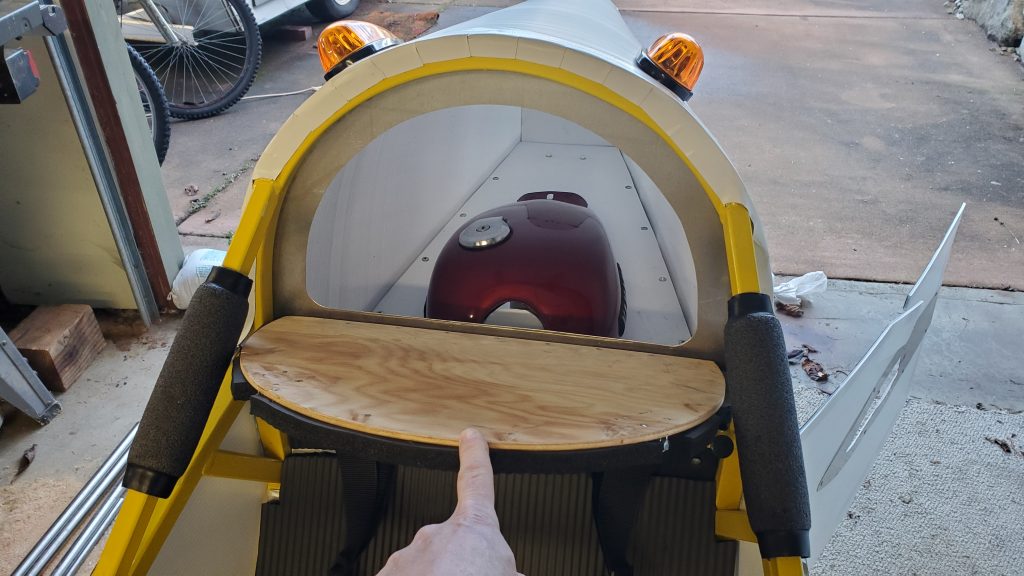
This is the rear storage trunk, and where you fill the gas tank. The turn signals are above.
The front aluminum rimmed wheels are 17″ by 2.5″ wide rims. The tires are rated for up to 90 mph road use. So far I’ve achieved 62.5 mph.

I did salvage a bit of the acrylic canopy. It is noisy inside when attached, but I did achieve 87 miles per gallon with this minimal fairing set-up.
It handles good at speeds below 50 mph. Any faster the handling becomes twitchy due to the 72″ wheel base. Still, it’s a fun ride.
IMPROVEMENTS!!
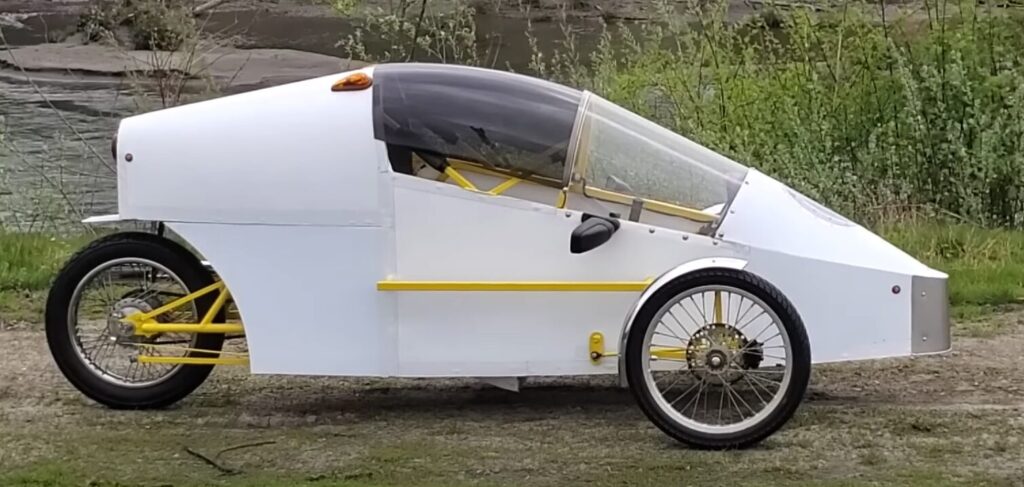
Not long ago I increased the wheelbase by lengthening the rear fork, which makes it less twitchy at higher speeds. I got it up to 68 mph. Fast enough.
I also improved the front brakes and replaced the prototype belly pan.

Got his little decal when vacationing in OAHU. Had to have it for my badass little trike.
